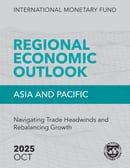This web page presents information about the work of the IMF in Mongolia, including the activities of the IMF Representative Office. Additional information can be found on the Mongolia and IMF country page, including IMF reports and Executive Board documents that deal with Mongolia.
At a Glance
- Current IMF membership: 191 countries
- Mongolia joined the Fund in February 14, 1991; Article VIII; Quota: SDR 51.10 million
- Current Outstanding Purchases: Stand-by Arrangement SDR 35.8 million
- Country Report: Staff report for the 2017 Article IV Consultation (also available in Mongolian), May 31, 2017
News and highlights
Open Editorial: A better alternative to interest rate caps (Mongol Messenger)
by Neil Saker, IMF Resident Representative in Mongolia
May 10, 2019
"Зээлийн хүүгийн дээд хязгаар тогтоохоос илүү сайн сонголт бий" (Gogo)
ОУВС-гийн Монгол дахь Суурин төлөөлөгч Нэйл Сакер
May 3, 2019
Finance and Development, March 2018
March 8, 2018
Millennials and the Future of Work
Finance & Development Magazine, June 2017 Issue
September 8, 2017
World Economic Outlook Update, July 2017
The Global Economy Maintains Momentum
July 25, 2017
IMF's Work on Mongolia
No results found. Either there was an error with the web service or there is no data returned by the web service.
Regional Economic Outlook
October 24, 2025

Navigating Trade Headwinds and Rebalancing Growth
Economies in the Asia-Pacific region have been resilient so far in 2025. Nevertheless, higher US tariffs will likely reduce external demand and eventually weigh on growth. Greater regional integration and structural reforms will be critical for sustainable growth.
Read the Report



